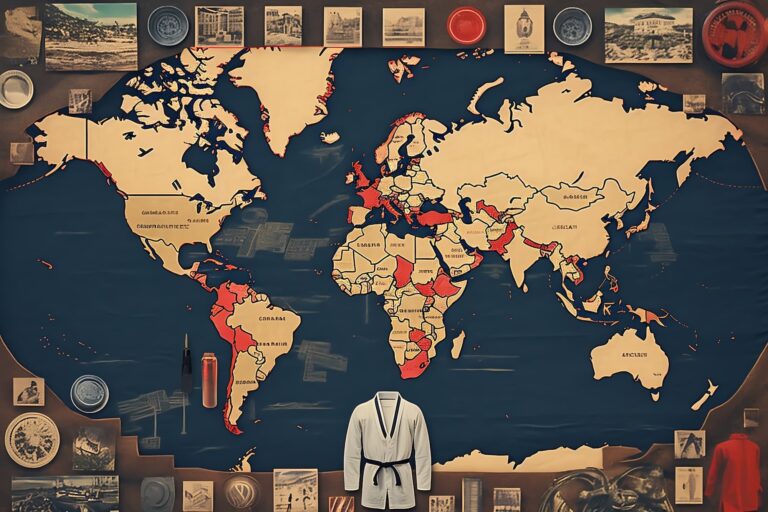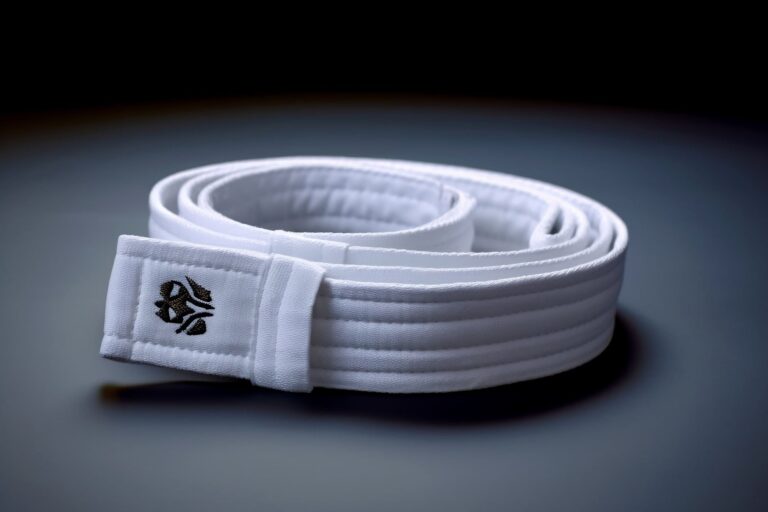From CrossFit/Powerlifting to BJJ/Muay Thai: The First 50 hours
This is a post for everyone who does CrossFit or general fitness/powerlifting and wants to transition to BJJ (a.k.a. Brazilian Jiu-Jitsu) and Muay Thai as I did.
I’m now two months in in, having done over 50 hours of class/drill time in over 40 classes, and can offer perspectives as a newbie white belt (in Jiu-Jitsu — Muay Thai doesn’t have a belt system). I’ll add more perspectives as more time goes on.
I started out learning BJJ, but started adding in Muay Thai for a few reasons which I’ll outline below.
Yes, I have barely any experience in martial arts next to the seasoned people with belts of any colour. But that’s why I’m writing this — perspectives of a relative newbie are important. The first few months taught me a lot that I didn’t know before, and I know I’ll lose perspective.
I’ve asked senior practitioners things, and sometimes they can’t relate to the experience of an absolute newbie — other than by comparing it to other newbies that they teach (as purple belts and up are often teachers of white belts).
For people thinking of transitioning sports, what I know and remember now is most relevant — there’s a transition point where many people give up after a few months.
You might be wondering the same things I did, like:
- Is BJJ a “workout”? (Muay Thai more obviously is)
- What advantages do I have as an ex-CrossFit person, as someone strong, flexible, and agile, if any?
- What will I have to work on?
- What does BJJ “feel like” to the untrained martial artist?
- Should you do BJJ and Muay Thai together?
I’ll explore a few of these.
Background — a bit about me
Below is a bit about me just to see how you relate (or not).
As background, I started “fitnessing” in my early thirties. Until that point I had casually gone running 3-5 times a week before work, just a few kilometers, and I had tried P90X at home (a series of workout at home DVDs… this is before online fitness programs/apps became a thing) and enjoyed it, and searched “what to do after P90X”.
There was a CrossFit gym down the road from my apartment in Hong Kong. I joined, terrified — I had never even touched a barbell, and all these people seemed huge and yelled a lot.
But after a month, I was hooked on the camaraderie. Then I got hooked on the feeling of improving. Then, after around 6 months, I was a familiar face, and after a few years I was an old hand and nothing surprised me.
After years of CrossFit training, I became pretty good. I got some big numbers in my lifts (not as big as now), and I could do all the vanilla movements like double unders, kipping pull-ups, and muscle-ups, etc.
Then I transitioned to focus more on powerlifting, and doing a few “CrossFit-style workouts” (e.g. a 12-40 minute circuit workout) times a week to keep up my agility and heart rate. I started learning to do strict handstand push-ups, muscle-ups, and single-arm push-ups. I started working on my numbers, until I got to some points I was happy with, including a 1000-lb total (here’s the story of how I got there).
So, I’m strong, fit, and agile. But what next? Adding 1-2 kg to a deadlift didn’t feel like I was becoming a dramatically better person. Adding volume of burpees or push-ups got a bit boring. I wanted to be back on the steep part of the curve.
There are two physical skills I’m very interested in becoming better at. One is dance (which is a separate topic), and one is martial arts.
Before starting jiu-itsu I had never studied a martial art — aside from maybe half a year as a kid doing Taekwondo.
Choosing a Martial Art: Why Jiu-Jitsu and Muay Thai?
I chose jiu-jitsu as a martial art because it seems to have similarly community-minded people, is well respected, and you can train in it anywhere in the world.
Jiu-jitsu gyms tend to be MMA gyms these days (in Australia, the UK, and the US, anyway), and have classes that include Muay Thai, or sometimes similar disciplines like “MMA striking” or “kickboxing”.
To me, and anyone else not actually going into battle or working in security, any martial art is a good martial art, as long as the gym, coaches, and community are good folk, and you learn by doing. The actual content for me is less relevant. People tend to bring stuff over from anything else they’ve studied.
Into jiu-jitsu you can bring in stuff from judo, wrestling, and maybe other things, and into Muay Thai you can bring in things you’ve learned from boxing, general MMA striking, etc. (Of course, you may have to also un-learn a few things!)
But jiu-jitsu/Muay Thai/MMA just tends to have a high proportion of good gyms, coaches, and communities.
This is the biggest parallel between Crossfit and Jiu-Jitsu, the thing they most have in common: many great gyms, terrific coaches, a strong community, and a very broad geographic footprint.
I first heard of BJJ back in 2015. I was visiting a friend in Japan. When I told him about CrossFit’s global culture of camaraderie and supportiveness, he said “Hey! That sounds like Jiu-Jitsu culture.”
The culture of CrossFit and MMA is not entirely the same, but they share some parallels. But I’ll get into that later.
Some BJJ tends to be about MMA, or alternatively about self defence. I’m not interested in how things apply in “the street” (a place where I never end up… dont’ drink, and go to sleep at 9). I’m also not really interested in becoming an MMA fighter, other than friendly sparring.
So for me, studying martial arts is something I want to do learn a new skill with a steep and long learning curve, make some friends, stay in shape (or get in better shape), have some fun, and get more comfortable with my body. I think of it as something like learning to dance.
Other contenders for martial arts that can achieve those things are:
- Boxing (huge depth of knowledge, but involves getting punched in the face a lot)
- Capoeira (looks fun, but the music and singing bit isn’t for me)
- Judo (seems fun, but it’s smaller, and it’s harder to be a beginner as an adult, as people start it from young)
Among those, I’m most interested in Muay Thai and BJJ, the combination of which is a good foundation for MMA.
The most attractive thing about BJJ and Muay Thai is that there are gyms everywhere. It’s very popular. So I can pick and choose the right gym with the right culture and then stick with that for a while.
Because I’m interested in everyday fitness, I focussed on martial arts that are very active, through which you learn by doing. In jiu-jitsu, you (usually) roll from day one. In Muay Thai, you nearly always train with a partner on pads, and you start sparring within weeks. This is a contrast with boxing, for example, where you don’t spar intensely until you’ve done a lot of training, and many martial arts where they think it’s too dangerous to practise live (huge red flag… well, unless it’s shooting).
A lot of the way in which you learn depends on your school and coach. So if there are Karate schools where you spar a lot, I’d be interested in those.
How do you even write Brazilian Jiu-Jitsu?
Brazilian Jiu-Jitsu is the official spelling in English, with that romanisation system and a hyphen.
You can also write it as
- Jujitsu (more modern romanisation of the Kanji characters)
- Jujutsu (current standard romanisation)
- 柔術 (Japanese Kanji, also Traditional Chinese, róushù)
- 柔术 (Simplified Chinese, róushù)
- 유술 (Korean, yusur, derived from the same Hanja as the Kanji)
Basically because it’s an imported word, I just defer to the way the big schools spell it, which is “Jiu-Jitsu”.
This may seem irrelevant, but it’s very relevant to me, as I’m semi-obsessed with Kanji and Hanzi…
Why add Muay Thai to Jiu-Jitsu?
There were a few reasons I added Muay Thai to Jiu-Jitsu.
Obviously, when learning them together, progress of each slows. But I don’t care. I don’t need to get to a certain level by a certain date, and there’s actually overlap — e.g. Muay Thai has some grappling and throws, and Jiu-Jitsu classes sometimes deal with closing range with a striking opponent.
The reasons I added Muay Thai in are:
- Many gyms offer both striking and Jiu-Jitsu classes. Some people do both; it’s hard not to just be curious. In MMA-type gyms, many do both.
- Some Jiu-Jitsu techniques are actually about defending against a striking opponent, as I mentioned above — but the classes don’t cover striking (Jiu-Jitsu doesn’t have striking).
- Some Muay Thai classes are about grappling, throws, and takedowns — but they stop when the opponent goes down (Muay Thai doesn’t have ground work).
- Sometimes my back or some part of me is sore and I want to use my body in a different way.
- Muay Thai is a different skill set and workout. I work my balance, power, and heart fitness in a very different way
- It looked fun! (I could have just said this)
Apart from the fact that I can do fewer of one class if I’m doing more of the other, doing both together won’t slow me down as a beginner. Everything is new and good information now — building skills in managing my posture, balance, and spatial awareness. I currently do at least six classes a week, learning more towards Jiu-Jitsu, and 2-3 of each a week is a good minimum to progress in either.
What are Jiu-Jitsu and Muay Thai classes like?
Both Jiu-Jitsu and Muay Thai classes have a lot in common.
They’re both
- With a partner
- Very social
- Focusing partly on technique, partly on practise
- Usually low on music, high on giving opportunities to be coached
Muay Thai classes usually involve one person with mitts, one with gloves. You’re learning a striking technique or combo pattern and have to work power, speed, balance, agility, reflexes, etc.
Some Muay Thai classes involve sparring — both partners with gloves.
Jiu-Jitsu classes are also all with a partner. Maybe the main difference is that BJJ classes are very up-close and personal. You have to quickly get used to being squashed by a person often heavier than you, someone’s sweaty chest against your face, and keeping your focus, not panicking.
Some universal truths about Jiu-Jitsu as a beginner are
- There’s always someone who can totally destroy you, no matter what your belt. I get dominated by blue belts, who then go get dominated by brown belts to the same degree. People often say a belt only tells you part of the story — many things can contribute to how good someone is.
- You’ll be pinned/submitted an infinite number of times in your career, and especially so in your first six to twelve months. It was over a month before I satisfyingly tapped someone out (not just a panicking newbie), and still a rare occurrence.
I really enjoy Jiu-Jitsu because I enjoy the feeling of failing forward. The third time I was suffocated by my own arm (in an “arm triangle”), I detected the pattern, and started asking and investigating how to defend against it. Then I practised those, learned more, and learned how to prevent it, escape from it, etc. But I still get it done to me — just not with as much ease or as often.
My favourite sparring partners are those who treat it like a game, like wrestling with siblings as a kid, but who let you “try” stuff to see if it’ll work. During a roll, you can laugh, congratulate someone, or pause and give suggestions.
Is Jiu-Jitsu a workout?
Muay Thai is more obviously a workout. So this is more a question I had about Jiu-Jitsu.
One of my concerns starting out studying Jiu-Jitsu was whether going to a gym and doing it for an hour or so would constitute a “workout”.
After getting pummelled by WODs involving EMOMs and AMRAPs galore in CrossFit for years, I wanted to make sure that Jiu-Jitsu would be a workout in the same way.
My main concern is that I want to keep developing my strength, conditioning, and flexibility. I’m sure any martial art is good for flexibility and ability/coordination, but is it good for strength and conditioning?
Here’s my take: yes, a BJJ class is always a workout, but not as holistic one as a fitness class or CrossFit workout.
In the first Jiu-Jitsu sessions, you’re using all kinds of muscles. A lot of them are your arm and chest muscles. This is bad! You exhaust yourself quickly, and soon learn that as a newbie, you’re supposed to learn to defend first, then hold positions, and then attack.
I learned this quickly. I was exhausted whether I sparred with white belts or black belts or anyone in between.
Afterwards, I was sore in my arms, legs, back… everywhere.
Then, as I got better in just a few short weeks, I found myself less sore… but moving around a lot more. Rather than be static on the ground and pushing, I’d be squirming, kicking legs around, and trying to do strategic “sweeps”. It was still a workout, just different!
The challenge at my point is to be relaxed but strong without being tense.
So without question, Jiu-Jitsu is a workout. I’d liken it in intensity to a HIIT workout, except there’s no rhythm to it, and you have to go at the pace of your opponent. Good luck!
At the end of an “open mat” session, everyone looks wiped out — from white belts through to the purple belts.
My agility and my efficiency in movement is likely to go up in Jiu-Jitsu.
On the other hand, my absolute strength is likely to go down. So I’ll probably keep going back to powerlifting occasionally.
Muay Thai classes are a also workout, but mostly focusing on cardio, speed, and developing power through proper body movement. Absolute strength will go down if I just do classes like that — but it can also be a hindrance (it could slow me down).
What advantages does Crossfit/general fitness have for transitioning to BJJ / Muay Thai?
This is an interesting question. I was wondering — as someone generally fit and strong, do I have an advantage in BJJ?
I think the three advantages that years of CrossFit gave me were indirect but important ones. They were:
- Generally believing in myself. I grew up not terribly fit, and thanks to years of training in CrossFit I now think of myself as athletic, and able to learn how to do anything. This is the main difference between CrossFit and other generic fitness disciplines/classes — CrossFit makes you (and calls you) an athlete. Other places get you fit, strong, and “toned”, which means whatever you want it to mean.
- Humility. Seeing legends in the powerlifting gym constantly taught me that anyone is capable of anything, and I need to always adopt a posture of learning — drilling my weaknesses, working on myself.
- Mobility/learning how to move. CrossFit makes us do mobility drills a lot. We learn a lot about how to warm up, and develop good strength from our core. Those help with throwing our legs around, and not getting pinned too easily, and learning how to move my hips to do kicks. If they say “ten push-ups”, that’s my jam.
- Cardio fitness. I can last an entire 1-1.5 hour session without dying, unlike many newbies.
Apart from that, obviously being fit and strong helps — but it’s more the absence of a weakness.
But over someone with even just a few weeks of experience, I have no advantage in BJJ as someone strong. Similarly in Muay Thai — my posture, guard, speed, agility, and co-ordination are all hopeless against even a beginner.
In Jiu-Jitsu, it’s good counsel to ignore your strength when training BJJ, as it can become a crux. Those who are strong already are encouraged to put their strength to the side and learn the skills, then use the strength when they need it in competition.
Jiu-Jitsu is (to my amateur mind) about skill first, and moving efficiently enough to not get exhausted, using weight and strength to your advantage. If you know how to lie on top of someone with all your weight in the right area, you can make 50 kg feel like 200 kg (or more). People showed me that on day one as a recipient, then how to do it in the second or third week.
And conversely, I try to pin people 2/3 my weight and am unsuccessful. They squirm out and have me in a choke in seconds.
So using my strength will prevent me from learning proper position, and also lead me to gassing myself out very quickly. Instinctively pushing and pulling always led to disaster. (Actually, most things still lead to disaster!)
Nonetheless, if you put me behind a barbell, I’d be stronger than 90% of people in my martial arts classes. They can still pin me, but if I keep up that strength somewhat during my training, then I’ll have an advantage in the future.
In Muay Thai, while I’m already fit enough and can move, I need to improve my leg mobility, learn how to kick and do combos, and also read my opponent. It moves very quickly compared to Jiu-Jitsu or of course a fitness class.
What does someone coming from Crossfit/Powerlifting/General fitness have to work on?
So, you’re fit and strong, and you can lift heavy objects or keep moving for 30-60 minutes. This is a good start.
But I’ve found in my first months of martial arts that these are the things I hadn’t ever worked on, doing just “general fitness”:
- Thinking. Martial arts are partly a mental game. It’s a trite cliché, but people like to liken Jiu-Jitsu to chess. You have to think a few steps ahead of your opponent. For now, I’m thinking about 0-1 steps ahead — but I’m still looking for weaknesses in positions and trying to exploit them. At the rookie stage this is just things like “hey, they look unbalanced, maybe I can invert… oops, no, now they have my neck and arm”. Muay Thai also involves looking for a lot of body cues — looking at their stance and hand position as for clues to their style, where and how they’ll strike.
- Agility. In general fitnessing, there’s not much agility you have to practise. Probably the most difficult thing I had to do was barbell complexes, like combinations of thrusters and cleans, etc. They’re not easy, but they’re also a lot easier than the crazy moves you do in Jiu-Jitsu to escape from an arm lock, or the many combinations you learn in Muay Thai (“jab, cross, hook, slip, kick, push, catch their kick, elbow, elbow, kick!”)
- Staying calm. Yes, winning a CrossFit competition takes focus and there’s a mental element too. But you don’t have people trying to break you in a competition by crushing your face with their stomach. There are many situations where I think “I’m still alive… I can still breathe” and I know I can keep going. In either Muay Thai or BJJ, if you get tired, your opponent wins.
- Reacting to an opponent. In fitness, you don’t have an opponent who’s out to get you. Conversely, you often have someone who’s cheering you on. That’s not to say that Jiu-Jitsu is competitive in a negative way — most rolls I’m in involve someone saying “well done!” — but they’re definitely trying to pin me. The pace isn’t my own — it’s a dance. In Muay Thai, even casual sparring partners like to “punish” me for getting sloppy with my guard.
- Understanding anatomy. In BJJ, When I’m trying to get someone in a lock or a choke, it’s quite hard to understand exactly where my limbs should be to put maximum pressure with minimum effort. In Muay Thai, it’s interesting learning where the vulnerable parts are to strike, or where the hard parts are with which to block.
There’s another element which is a bit harder to explain, and it’s dynamism.
In CrossFit or any workout, they say “do this for 30 seconds” or “do 15 of these”. There’s a predictable pattern and it’s entirely up to you (except for the rare partner workout).
In martial arts, some of the pace is up to you, but some of it is up to your training partner. You can agree to “take it easy”, but still, you react when they move, and they react when you move. Every partner has a different pace and rhythm.
It’s a bit like training drills where someone will suddenly say “push-up” or “crunch” and you just have to do it from wherever you are, but continuously, and for minutes on end, and if you don’t, you’ll be strangled or punched in the face.
There’s probably more. But those are the main things that have come to me right now in thinking what more I had to learn coming from a fitness background into a martial art.
Should you move from CrossFit to Jiu-Jitsu/Muay Thai?
I’m going to say this — if you think you might do it in a while, do it as soon as you come across a good gym.
The reason I regret not moving earlier isn’t because it’s “better” or whatever. It’s because martial arts are so much more taxing on the body that it’s something I think people should get started in at a relatively young age (say your thirties at the latest).
Your ability to withstand pain or heal goes down as you get older. If/when you get bruises, cuts, or abrasions, your recovery time will be longer. Same if you just pull muscles, hurt bones, and so on.
Luckily, BJJ is a “gentle art” (see the etymology above), and is something you can practise even as an old person — into your seventies and eighties. I’ve rolled with (and lost to) people in their sixties. I plan on being one of those fifty-plus-year-old black belts in the future. People will assume I was training since I was in my twenties, and they’ll be wrong…
On the other hand, Muay Thai is quite a violent sport. A lot of the contact (knees and elbows) is without a glove. You can do a lot of damage! People often tell me they’ve switched to 100% Jiu-Jitsu because they no longer recover quickly enough from being punched in the face.
I’m in my forties already. Not looking forward to being hit in the face, but I’ll certainly put a cap on Muay Thai if I feel I’m not keeping up.
Good luck!
Next steps
I finished my first 100 hours of Jiu Jitsu — see the post about there here.







